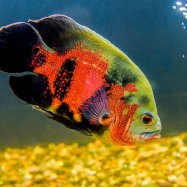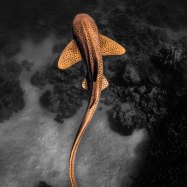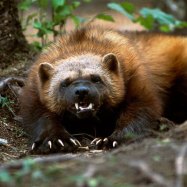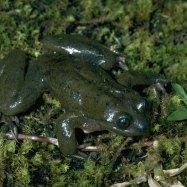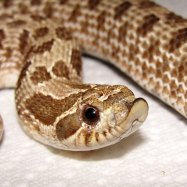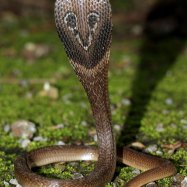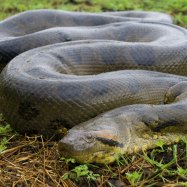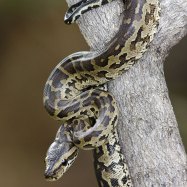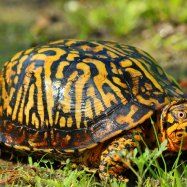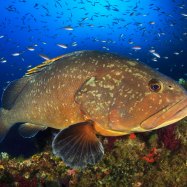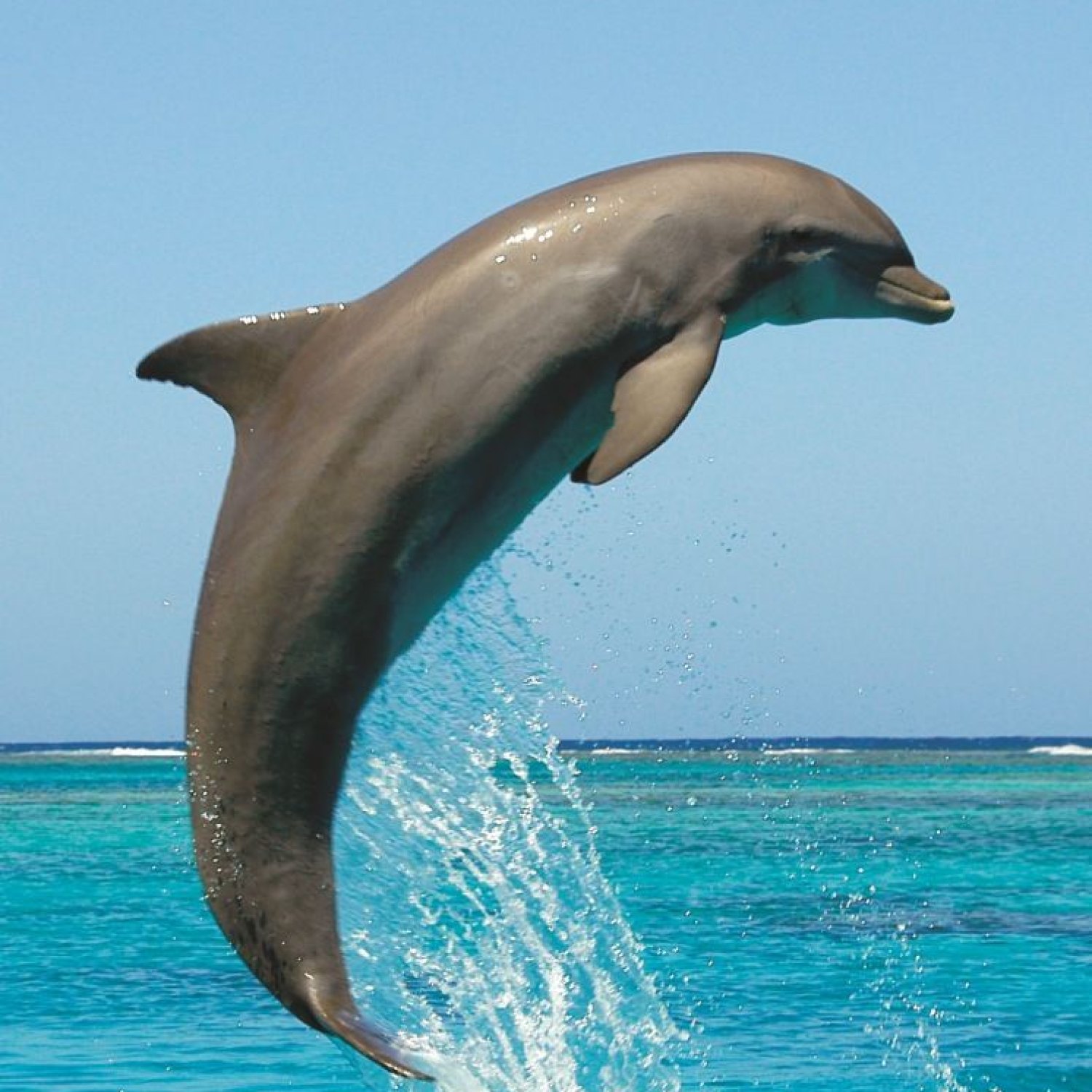
Bottlenose Dolphin
8-12 feet (2.4-3.7 meters)
Bottlenose dolphins are fascinating creatures found in oceans, seas, and coastal areas worldwide. They can grow up to 8-12 feet in length, making them one of the largest species in the animal kingdom. With their streamlined and elongated body shape, these playful mammals belong to the Delphinidae family. Despite their common name, they have impressive cognitive abilities and are highly social animals. Have you ever spotted one during a beach vacation?
Animal Details Summary:
Common Name: Bottlenose Dolphin
Kingdom: Animalia
Habitat: Marine, Coastal
The Incredible and Intelligent Bottlenose Dolphin
Have you ever seen a Bottlenose Dolphin in action? These playful, intelligent creatures are some of the most beloved marine animals in the world. Found in oceans, seas, and coastal areas around the globe, the Bottlenose Dolphin is a fascinating animal that has captured the hearts of many. In this article, we will dive into the world of the Bottlenose Dolphin and learn about its outstanding features and characteristics.Anatomy and Physical Appearance
The Bottlenose Dolphin, also known by its scientific name Tursiops truncatus, is a member of the Delphinidae family and is commonly found in marine and coastal habitats Bottlenose Dolphin. They have a streamlined and elongated body shape, making them excellent swimmers. They can reach lengths of 8-12 feet (2.4-3.7 meters) and can weigh up to 1,400 pounds (635 kilograms). They have a thick but smooth skin that is resistant to water friction, allowing them to glide effortlessly through the water.Their body coloration is distinct, with a grayish to bluish-gray color on their back and a lighter shade on their underside. This color pattern, known as countershading, helps them blend in with their surroundings and makes them less visible to predators. It also helps them hide from their prey when hunting. Additionally, their skin is covered in a layer of blubber, which helps regulate their body temperature and provides insulation in colder waters Blue Belly Lizard.
One of the most unique features of the Bottlenose Dolphin is its beak, which gives them their name. Their snouts are elongated, resembling a bottle, hence their name "bottlenose." These beaks are used for capturing prey and for communication with other dolphins. They have sharp and conical teeth that are ideal for grasping and tearing their prey.
Habitat and Geographical Distribution
Bottlenose Dolphins are found worldwide in various countries, including the United States, Australia, Brazil, and South Africa. They are commonly found in tropical and temperate waters, but they can also be found in some colder regions. They prefer living in coastal and marine habitats, including bays, lagoons, and estuaries. They are also commonly found in shallow waters, but they can dive to depths of up to 800 feet (244 meters) in search of food.These intelligent animals are highly social and can be found in groups, known as pods, ranging from a few individuals to several hundred. They are also known to migrate to different locations in search of food and warmer waters. These migrations can span hundreds or even thousands of miles, making the Bottlenose Dolphin a truly remarkable animal.
Feeding Behavior
As carnivores, Bottlenose Dolphins have a diverse diet and are skilled hunters. They typically feed on a variety of fish, squid, and octopus, but they have also been known to feed on crustaceans and other small marine animals. They are apex predators, meaning they are at the top of the food chain in their ecosystem. Their sharp teeth and strong jaws allow them to catch and consume their prey quickly and efficiently.These intelligent animals often use hunting techniques such as corralling, where they surround a school of fish and work together to catch them. They also use echolocation, a biological sonar system, to locate and track their prey. This unique ability allows them to "see" underwater and catch their prey even in low visibility conditions.
Behavior and Communication
Bottlenose Dolphins are highly social animals and are known for their playful behavior. They are often seen jumping, leaping, and riding waves, much to the delight of onlookers. They are also highly vocal animals, using a variety of sounds to communicate with each other. These sounds can include whistles, clicks, and squeaks, and have different meanings, ranging from socializing to hunting.Their intelligence and social nature also allow them to work together and solve problems as a group. They have been observed using tools, communicating with each other to achieve a goal, and even showing empathy towards one another. They also form strong bonds and can recognize and remember individual dolphins, even after long periods of separation.
Threats to the Bottlenose Dolphin
Despite their intelligence and adaptability, Bottlenose Dolphins face several threats in their habitats. One of the biggest threats is human activity, such as pollution, overfishing, and habitat destruction. These activities not only affect the dolphins' food sources but also harm the water quality and marine ecosystems they rely on.In some areas, Bottlenose Dolphins are also at risk of entanglement in fishing nets or being struck by boats and other vessels. Climate change is also a threat, causing changes in water temperature and acidity, which can affect the dolphins' prey and habitats.
Conservation Efforts
Thankfully, there are conservation efforts in place to protect the Bottlenose Dolphin and its habitats. These include laws and regulations to reduce pollution and prevent overfishing, as well as establishing protected areas for dolphins to thrive.Research is also being conducted to better understand these incredible creatures and their behavior, which can help inform conservation efforts. In addition, responsible ecotourism practices allow people to observe and learn about Bottlenose Dolphins without causing harm to their natural habitats.
In Conclusion
The Bottlenose Dolphin is a truly remarkable animal, with its intelligence, social nature, and adaptability. Their anatomical features, feeding methods, and communication techniques are all fascinating and unique. However, these intelligent creatures face threats in their habitats, which can impact their survival. It is crucial to take action and protect these creatures and their homes, ensuring that they continue to thrive in the world's oceans, seas, and coastal areas. So, the next time you see a Bottlenose Dolphin, remember how incredible and essential they are to our planet's marine ecosystems.

Bottlenose Dolphin
Animal Details Bottlenose Dolphin - Scientific Name: Tursiops truncatus
- Category: Animals B
- Scientific Name: Tursiops truncatus
- Common Name: Bottlenose Dolphin
- Kingdom: Animalia
- Phylum: Chordata
- Class: Mammalia
- Order: Cetacea
- Family: Delphinidae
- Habitat: Marine, Coastal
- Feeding Method: Carnivore
- Geographical Distribution: Worldwide
- Country of Origin: Various
- Location: Oceans, Seas, and Coastal Areas
- Animal Coloration: Grayish to bluish-gray on the back, lighter on the underside
- Body Shape: Streamlined and elongated
- Length: 8-12 feet (2.4-3.7 meters)
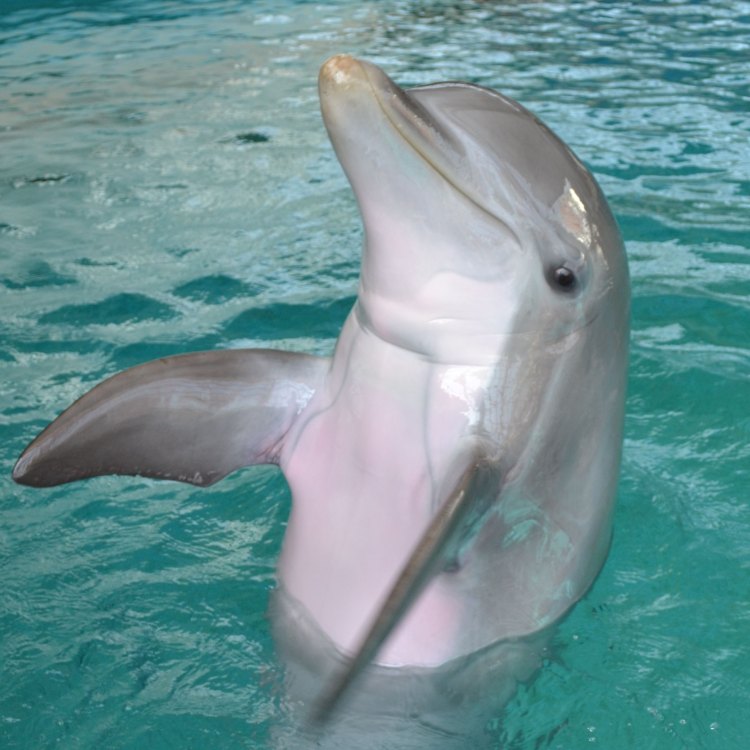
Bottlenose Dolphin
- Adult Size: 8-12 feet (2.4-3.7 meters)
- Average Lifespan: 40-50 years
- Reproduction: Sexual
- Reproductive Behavior: They breed year-round, with a peak in spring and summer.
- Sound or Call: They use a wide range of clicks, whistles, and body movements for communication.
- Migration Pattern: Some populations are migratory, while others are resident.
- Social Groups: Live in groups called pods, typically consisting of 10-30 individuals
- Behavior: Highly intelligent, social, and playful
- Threats: Habitat degradation, pollution, entanglement in fishing gear, and hunting
- Conservation Status: Least Concern (IUCN)
- Impact on Ecosystem: As top predators, they play a crucial role in maintaining the balance of marine ecosystems.
- Human Use: Used in entertainment (dolphin shows), conservation research, and ecotourism
- Distinctive Features: Bulbous forehead, long snout, and a curved mouth that gives the appearance of a permanent smile
- Interesting Facts: They are known for their acrobatic behavior and are often seen riding the bow waves created by boats.
- Predator: Orcas (killer whales) and large sharks
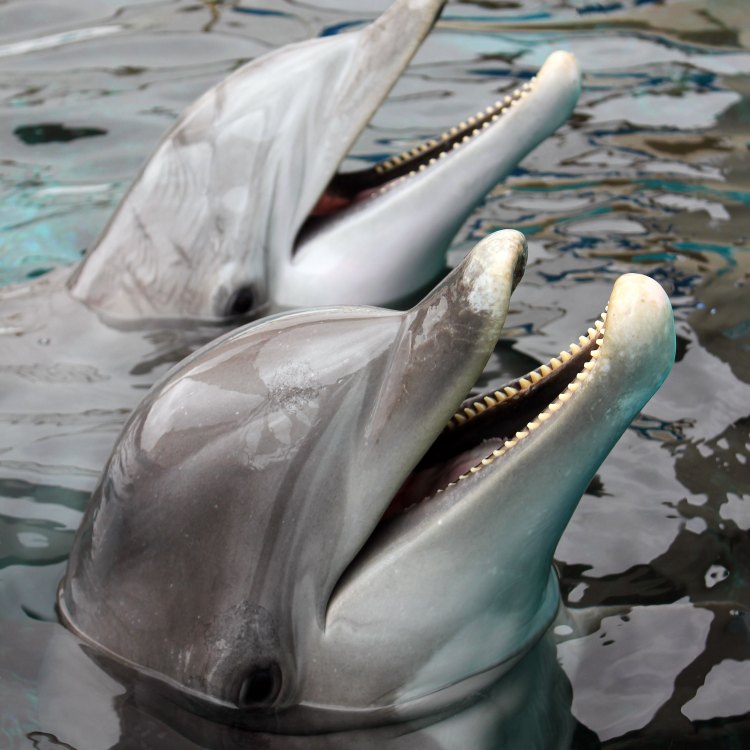
Tursiops truncatus
The Amazing World of Bottlenose Dolphins: An Insight into Their Social Behavior, Communication, and Impact on Ecosystems
The ocean is a vast and mysterious world, home to countless marine creatures that continue to fascinate us with their unique behaviors and characteristics. Among these creatures, the bottlenose dolphin stands out as one of the most intelligent, social, and beloved species. With its distinctive features and playful nature, the bottlenose dolphin has captivated the hearts of people around the world, making it one of the most recognizable and well-studied marine mammals.Adult bottlenose dolphins can grow to be 8-12 feet, or 2 PeaceOfAnimals.Com.4-3.7 meters, in length, and live for an average of 40-50 years. They are found in all the world's oceans, occupying both coastal and offshore waters. However, their exact population size is unknown, as they are difficult to track due to their wide-ranging habitat and highly social behavior.
One of the most alluring aspects of these dolphins is their remarkable reproductive behavior. Bottlenose dolphins are a sexually reproducing species, with males and females mating throughout the year. However, there is a peak in breeding activity during the spring and summer months, when food is abundant. Males will compete for females by displaying their physical strength and agility, using their bodies to push and shove each other in a playful manner. This competitive behavior is known as "mating herding," and it is quite a spectacle to witness Blue Racer.
But the reproductive behavior of these dolphins is not limited to mating. They also engage in a unique behavior called "beak-to-beak courtship," where males and females swim side by side and touch their beaks together in an intimate gesture. This behavior helps to strengthen the bond between mates and also serves as a form of communication. Once a female becomes pregnant, she will carry the calf for about 12 months before giving birth to a single calf, which is nursed by the mother for up to 2 years.
Communication is a vital aspect of the bottlenose dolphin's social behavior. These dolphins use a wide range of clicks, whistles, and body movements to communicate with each other. Each dolphin has a unique sound or signature whistle, which acts as a vocal identification to other dolphins in the group. This allows them to keep track of each other and maintain group cohesion. They also use body language, such as slapping their tails or breaching (jumping out of the water), to convey messages.
Furthermore, bottlenose dolphins are highly social animals, living in groups known as pods, with an average of 10-30 individuals. These pods consist of females, their offspring, and sometimes a few males. They work together to hunt, protect each other from predators, and provide support and social bonding. Within a pod, there is a clear social hierarchy, with the dominant members having the most influence and decision-making power.
The migration pattern of bottlenose dolphins varies among different populations. Some are migratory, traveling long distances in search of food or warmer waters, while others are resident, staying in the same area all year round. The migration patterns of these dolphins are influenced by various factors, such as climate, food availability, and social dynamics within the pod.
As top predators, bottlenose dolphins play a crucial role in maintaining the health and balance of marine ecosystems. They feed on a variety of fish, squid, and crustaceans, helping to control their populations and avoid the overgrazing of certain areas. Their intelligence and adaptability also allow them to change their hunting strategies depending on the availability of prey, making them an essential component of the marine food chain.
However, despite their vital role in marine ecosystems, bottlenose dolphins face many threats from human activities. Habitat degradation, pollution, entanglement in fishing gear, and hunting are some of the major threats they face. As human developments encroach on their habitat, the dolphins may become stranded or lose their homes. Pollution, both from land and sea, can choke and poison them, affecting their health and survival. In addition, being caught in fishing gear, such as nets and lines, can cause serious injuries and death. Hunting of dolphins still occurs in some parts of the world, often for their meat or as bycatch.
To ensure the conservation and protection of these marine mammals, the International Union for Conservation of Nature (IUCN) has listed the bottlenose dolphin as a species of Least Concern. However, the threats they face should not be underestimated, and efforts must continue to be made to safeguard their population. Through conservation research and education, we can better understand these dolphins and take action to protect them and their habitats.
Due to their intelligence, social behavior, and acrobatic nature, bottlenose dolphins have become a popular attraction in the entertainment industry. They are used in dolphin shows, where they perform tricks and stunts for the audience's entertainment. While these shows may be entertaining, they also raise concerns about the welfare of the dolphins. Captive dolphins are often kept in small pools and forced to perform unnatural behaviors, which can be stressful and have a negative impact on their physical and mental well-being.
One way to experience and appreciate these magnificent creatures without affecting them negatively is through ecotourism. This type of tourism focuses on responsible and sustainable interactions with dolphins in their natural habitat. It provides an opportunity for people to observe and learn about these dolphins while minimizing disturbance to their natural behaviors and environment. Ecotourism also generates income for local communities and raises awareness about the importance of conservation.
Distinctive features, such as their bulbous forehead, long snout, and curved mouth that gives the appearance of a permanent smile, make the bottlenose dolphin easily recognizable. But there are some other interesting facts about them that make them even more remarkable. For example, they are known for their acrobatic behavior, often seen breaching, tail-splashing, and spy-hopping (poking their head out of the water). They are also highly curious and have been observed playing with objects such as seaweed, leaves, and even plastic bottles.
Although bottlenose dolphins are highly social and intelligent, they are not invincible. As with many marine animals, they have predators in the ocean, including orcas (killer whales) and large sharks. But their natural defenses, such as their agility and speed, help them evade these predators.
In conclusion, bottlenose dolphins are truly captivating creatures, with their intelligence, social behavior, and distinctive features making them stand out as one of the most beloved marine mammals. Yet, like many other marine species, they face various threats from human activities, which can have detrimental effects on their population and the ecosystems they inhabit. It is our responsibility to ensure the conservation and protection of these amazing animals, to ensure they continue to thrive and enchant us with their presence in the world's oceans. So let us appreciate and admire them from a distance, allowing them to live their lives in their natural habitat, free from harm.
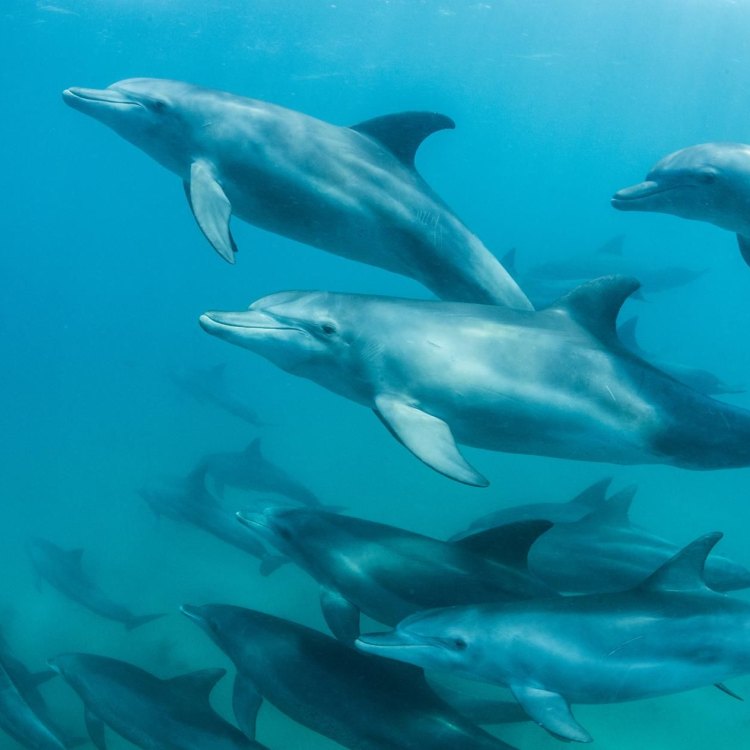
The Incredible and Intelligent Bottlenose Dolphin
Disclaimer: The content provided is for informational purposes only. We cannot guarantee the accuracy of the information on this page 100%. All information provided here may change without prior notice.


